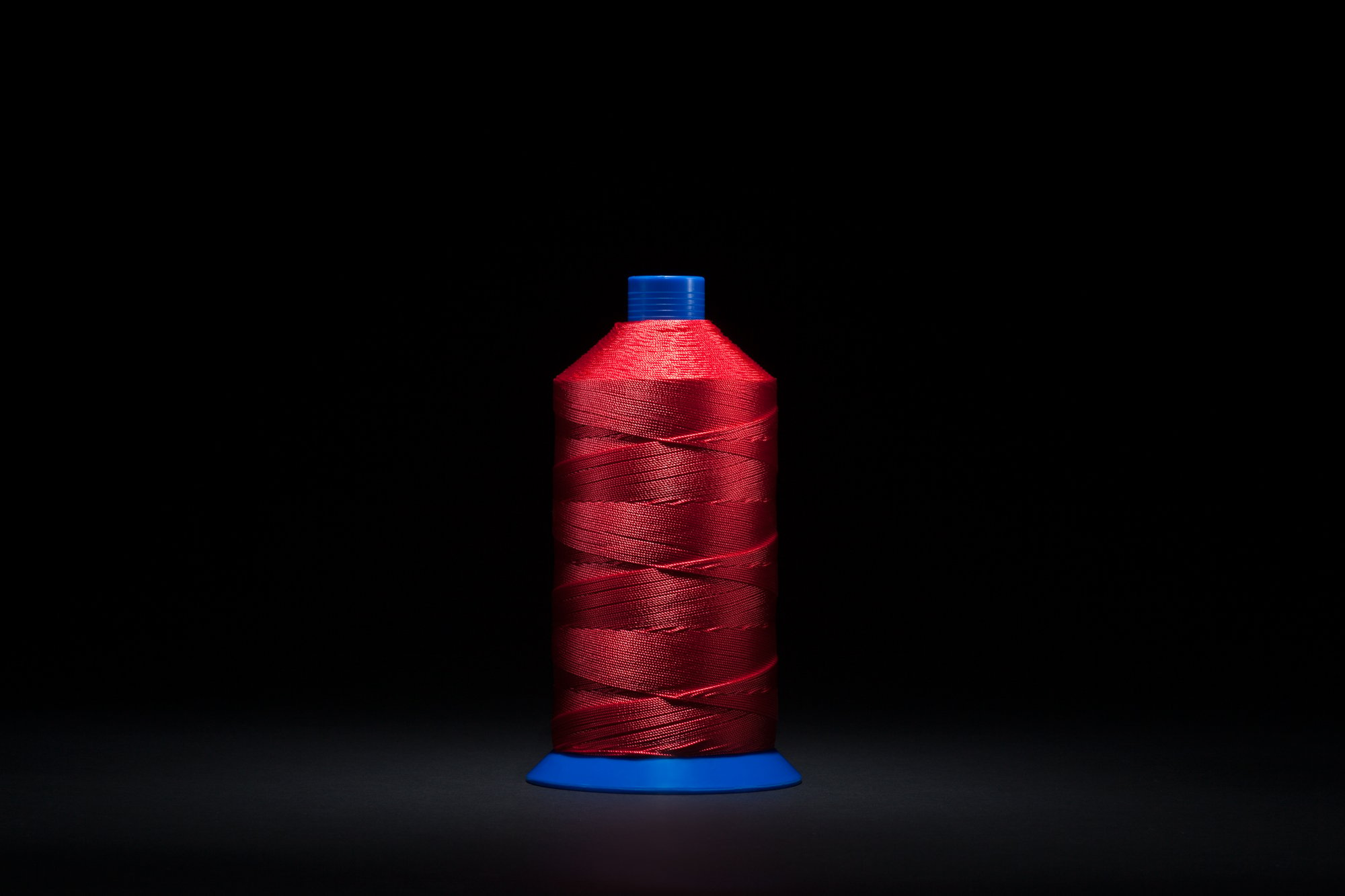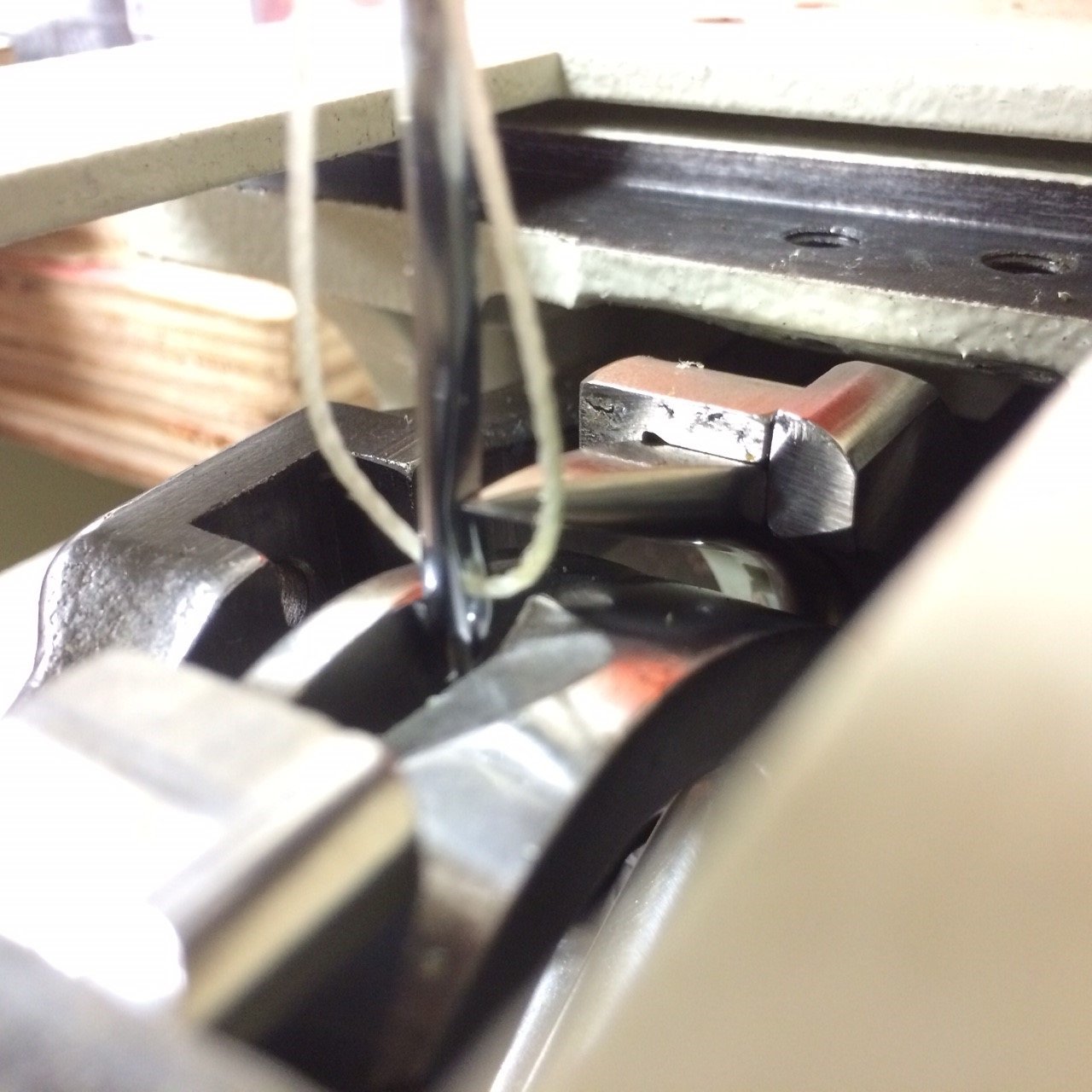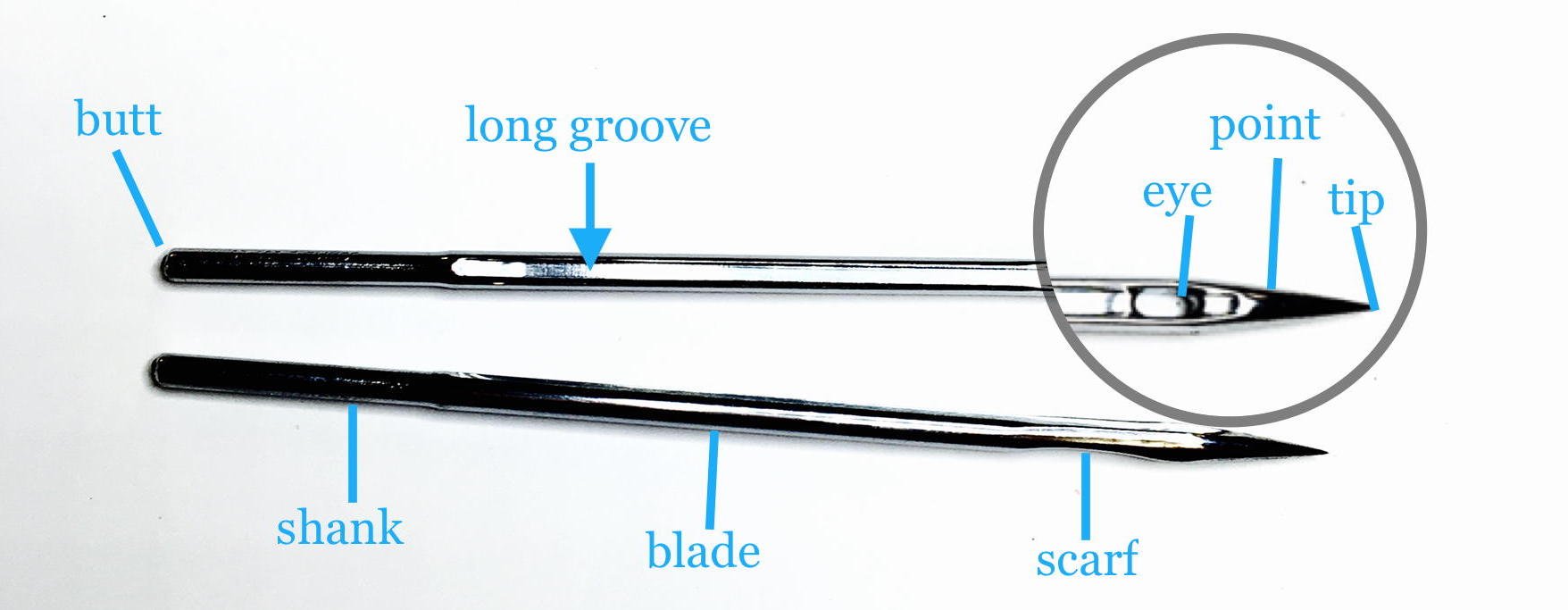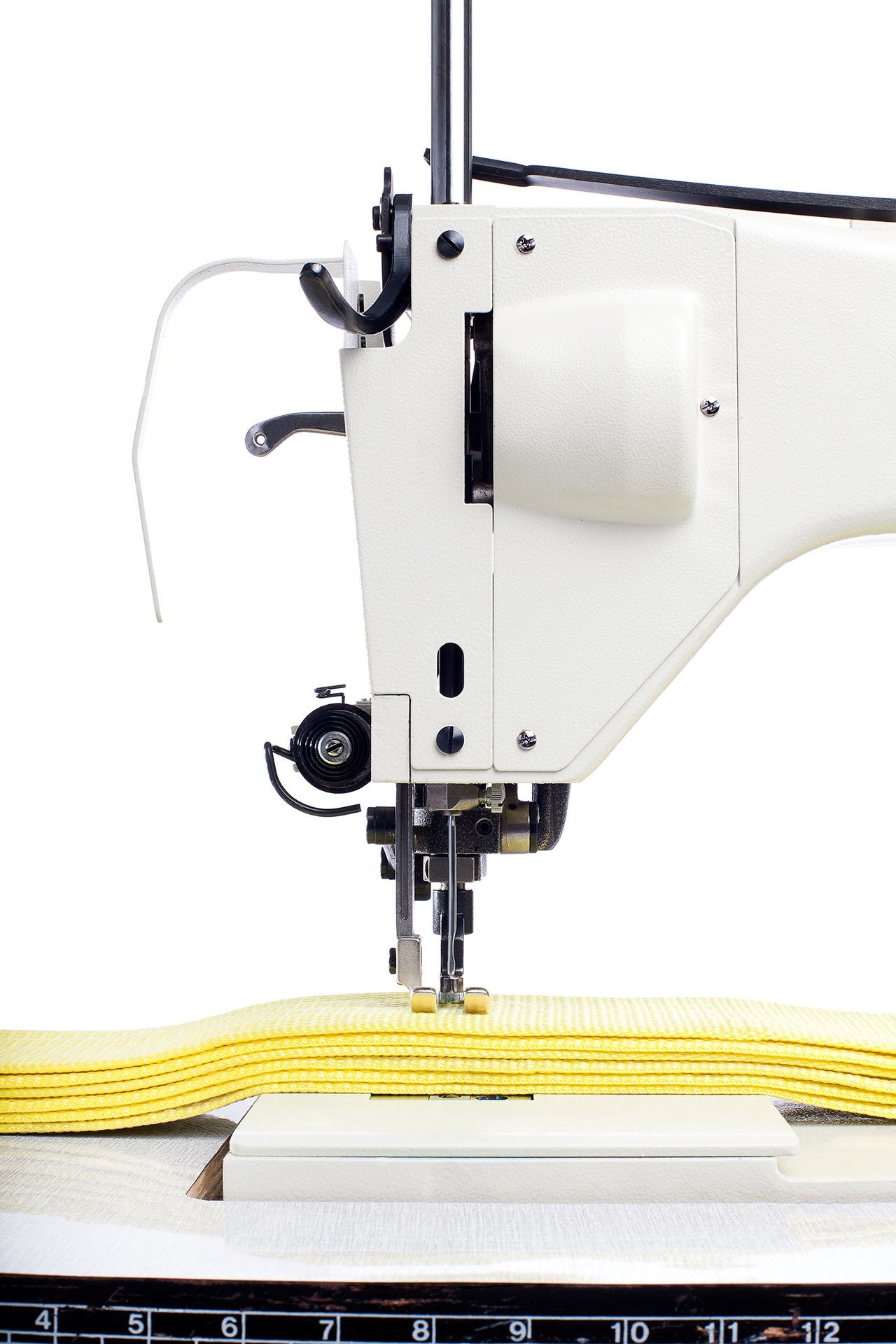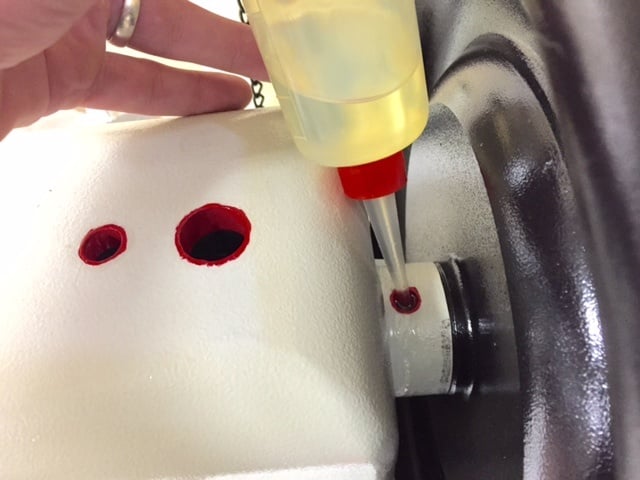Is your industrial sewing process affected by thread skips, breaks, and shedding? In our latest video tutorial, Service Thread Sewing Sales & Tech Support Manager, Dane Hatcher demonstrates how to avoid thread problems by properly adjusting your machine.
Read morePosts by Dane Hatcher
- By Dane Hatcher
- 05/28/20
- 0 Comments
- By Dane Hatcher
- 04/15/20
- 0 Comments
When industrial sewing operations require high thread or yarn tensions, properly designed sewing threads and yarns are critical to continuous production flow. Bonded sewing thread and yarn tends to perform well for critical and challenging sewing conditions often faced by manufacturing companies. We’d like to provide some insight into how bonded thread affects tension in industrial sewing and manufacturing.
Read more- By Dane Hatcher
- 04/06/20
- 0 Comments
It’s important to evaluate whether you should be using a bonded or non-bonded thread in your industrial sewing process. For manufacturers, each type of industrial sewing thread or yarn has its own set of advantages and disadvantages, so let’s take a closer look at each option and which might be right for your application.
Read more- By Dane Hatcher
- 06/13/18
- 3 Comments
Having the correct needle to thread configuration is essential for running a cost efficient and effective performing application within your sewing system. Though this practice is often overlooked, choosing the correct needle for your sewing application is absolutely critical to flawless performance. With the new thread and sewn fabric materials available today, it may be time to check the needle size for your operation – Are you having skipped stitches and thread breaks? Are you using the same needles you have always used? Here are some tips to help you see if you have an opportunity for improvement.
Read more- By Dane Hatcher
- 03/17/16
- 1 Comment
The timing on industrial sewing machines is essential to produce even stitches in the fabric of goods that your company produces. Different types of sewing machines need a different process to set the timing that corresponds to whether the unit does not have a shuttle, as in the case of looper machines, or has shuttles that oscillate, rotate or are vibrating/boat type.
Read more- By Dane Hatcher
- 03/04/16
- 0 Comments
If your top thread is shredding or coming apart while sewing, this could indicate a common issue with the process. When the sewing machine pushes the needle through the material, it grabs the thread with a hook (or “looper”), while the needle rises back up. If there is a problem with this step it causes the thread to peel back, shred, break, flake, or not even get caught at all.
Read more- By Dane Hatcher
- 12/18/15
- 16 Comments
Until the 1940s, there were no standardized size designations for home or industrial needles; each manufacturer chose the sizing system they liked best and there were over 40 systems of sizing in use.
Read more- By Dane Hatcher
- 08/28/15
- 9 Comments
Are skipped stitches causing you down time in your industrial sewing application? Here are some tips to help find and correct the common causes of skipped stitches.
- Check and make sure that machine is threaded correctly
- Make sure machine is oiled properly and general maintenance has been done
- Change the needle and make sure it is pushed all the way into the needle bar with the kerf/eye parallel to the hand wheel or slightly pointed towards incoming shuttle hook
- Check timing of needle in relation to hook. Make sure the needle is rising back up when checking the timing. When the tip of the hook is beside the needle, the eye of the needle should be ~ 1/16” below the hook. The tip of the hook should also be very close to the needle, about the thickness of printer paper from the needle:
- By Dane Hatcher
- 07/24/15
- 2 Comments
Heavy duty industrial sewing machines like the Service Class 7, Singer 7 Series, and Consew 733 can be used in manufacturing operations for years provided some simple preventative maintenance steps are followed on a daily, weekly, and monthly schedule. Here's what we recommend:
Read moreRecent Posts
Troubleshooting Series - Service Class 7 Troubleshooting Video Guide
- By Dane Hatcher
- 05/28/20
- 0 Comments
Is your industrial sewing process affected by thread skips, breaks, and shedding? In our latest video tutorial, Service Thread Sewing Sales & Tech Support Manager, Dane Hatcher demonstrates how to avoid thread problems by properly adjusting your machine.
Read moreWhat Effect Does Bonded Thread Have On Tensions in a Sewing Application?
- By Dane Hatcher
- 04/15/20
- 0 Comments
When industrial sewing operations require high thread or yarn tensions, properly designed sewing threads and yarns are critical to continuous production flow. Bonded sewing thread and yarn tends to perform well for critical and challenging sewing conditions often faced by manufacturing companies. We’d like to provide some insight into how bonded thread affects tension in industrial sewing and manufacturing.
Read moreIt’s important to evaluate whether you should be using a bonded or non-bonded thread in your industrial sewing process. For manufacturers, each type of industrial sewing thread or yarn has its own set of advantages and disadvantages, so let’s take a closer look at each option and which might be right for your application.
Read moreIndustrial Sewing Thread Needle Sizes - Which Is Best For Your Sewing System?
- By Dane Hatcher
- 06/13/18
- 3 Comments
Having the correct needle to thread configuration is essential for running a cost efficient and effective performing application within your sewing system. Though this practice is often overlooked, choosing the correct needle for your sewing application is absolutely critical to flawless performance. With the new thread and sewn fabric materials available today, it may be time to check the needle size for your operation – Are you having skipped stitches and thread breaks? Are you using the same needles you have always used? Here are some tips to help you see if you have an opportunity for improvement.
Read moreThe timing on industrial sewing machines is essential to produce even stitches in the fabric of goods that your company produces. Different types of sewing machines need a different process to set the timing that corresponds to whether the unit does not have a shuttle, as in the case of looper machines, or has shuttles that oscillate, rotate or are vibrating/boat type.
Read moreIf your top thread is shredding or coming apart while sewing, this could indicate a common issue with the process. When the sewing machine pushes the needle through the material, it grabs the thread with a hook (or “looper”), while the needle rises back up. If there is a problem with this step it causes the thread to peel back, shred, break, flake, or not even get caught at all.
Read moreUntil the 1940s, there were no standardized size designations for home or industrial needles; each manufacturer chose the sizing system they liked best and there were over 40 systems of sizing in use.
Read moreIndustrial Sewing Troubleshooting Tips - Fixes for Skipped Stitches
- By Dane Hatcher
- 08/28/15
- 9 Comments
Are skipped stitches causing you down time in your industrial sewing application? Here are some tips to help find and correct the common causes of skipped stitches.
- Check and make sure that machine is threaded correctly
- Make sure machine is oiled properly and general maintenance has been done
- Change the needle and make sure it is pushed all the way into the needle bar with the kerf/eye parallel to the hand wheel or slightly pointed towards incoming shuttle hook
- Check timing of needle in relation to hook. Make sure the needle is rising back up when checking the timing. When the tip of the hook is beside the needle, the eye of the needle should be ~ 1/16” below the hook. The tip of the hook should also be very close to the needle, about the thickness of printer paper from the needle:
Heavy duty industrial sewing machines like the Service Class 7, Singer 7 Series, and Consew 733 can be used in manufacturing operations for years provided some simple preventative maintenance steps are followed on a daily, weekly, and monthly schedule. Here's what we recommend:
Read more


